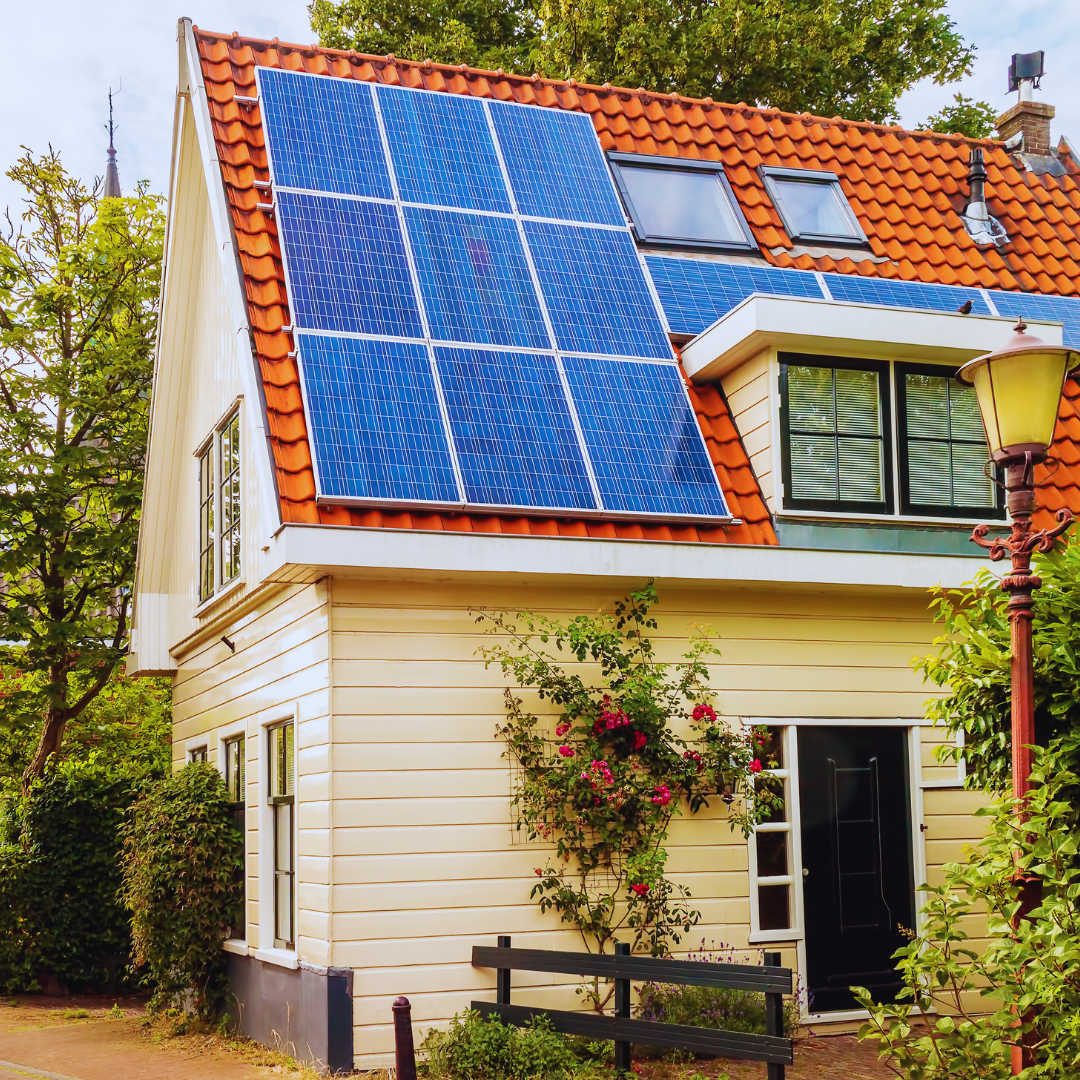Creating an eco-friendly home is not just about aesthetics; it’s about making choices that benefit both the environment and personal well-being. By incorporating sustainable materials and design principles, individuals can significantly reduce their home’s environmental impact. Simple changes, such as using reclaimed wood or energy-efficient appliances, can lead to a stylish, yet sustainable living space.
In recent years, the demand for eco-friendly design has grown as more people recognise the importance of sustainability. This approach not only conserves resources but also creates healthier indoor environments. Integrating elements like natural lighting, green roofs, and indoor plants can enhance air quality while adding visual appeal.
It is possible to create a beautiful and modern home without compromising eco-friendly values. By exploring various strategies, anyone can transform their living space into an eco-conscious sanctuary that reflects personal style and environmental responsibility.
Fundamentals of Eco-Friendly Home Design
Incorporating eco-friendly design elements into a home revolves around foundational principles that promote sustainability. These principles include sustainable design, selecting the right materials, and emphasising energy efficiency.
Understanding Sustainable Design Principles
Sustainable design focuses on creating spaces that are environmentally responsible and resource-efficient throughout their life cycle. Key principles include minimising waste, optimising energy use, and enhancing indoor air quality.
Designers often emphasise passive design strategies, which harness natural elements for heating and cooling. These may involve strategically placing windows to maximise daylight and selecting building orientations that utilise natural ventilation.
Incorporating plants within the home can improve air quality and contribute to energy efficiency. Biophilic design, which connects people to nature, also enhances overall well-being while supporting sustainability.
Selecting Sustainable Materials
Choosing sustainable materials is crucial in eco-friendly home design. This involves opting for resources that are renewable, recyclable, or sustainably sourced.
Examples include bamboo flooring, reclaimed wood, and recycled metal. These materials not only minimise environmental impact but also provide aesthetic appeal.
When selecting finishes and furnishings, look for items certified by organisations like FSC (Forest Stewardship Council), ensuring responsible forest management.
Using low-VOC (volatile organic compounds) paints and finishes helps maintain indoor air quality and reduces harmful emissions, contributing to a healthier living environment.
Incorporating Energy Efficiency
Energy efficiency is a cornerstone of eco-friendly design, significantly reducing a home’s carbon footprint. Implementing energy-efficient appliances, such as those rated by Energy Star, ensures reduced energy consumption.
Incorporating LED lighting, efficient heating systems, and smart home technologies can also lead to substantial savings on energy bills. Homeowners should consider insulation improvements to reduce heating and cooling loads.
Beyond appliances, renewable energy sources, such as solar panels, can provide sustainable power options. Installing solar thermal systems for heating water further enhances energy efficiency while decreasing reliance on non-renewable resources.
Enhancing energy efficiency isn’t limited to major installations-it also includes thoughtful design choices throughout the home. For example, stylish shutters that cover the bottom half of your windows can allow natural light to enter while minimizing heat loss or gain, which can help maintain a stable indoor temperature and reduce dependence on artificial lighting and climate control.
Similarly, using rugs on hardwood or tile floors can act as an extra layer of insulation, helping to retain warmth during colder months and reducing the need for constant heating.
Enhancing Eco-Friendliness Through Building and Renovation
Incorporating eco-friendly design elements during building and renovation can significantly reduce a home’s environmental impact. Key strategies include utilising reclaimed and recycled materials, adopting renewable energy solutions, implementing water conservation practices, and optimising home insulation. Each of these practices contributes to a more sustainable living environment.
Utilising Reclaimed and Recycled Materials
Using reclaimed wood and recycled materials is an effective way to minimise waste and preserve natural resources. Reclaimed wood can be sourced from old buildings, barns, or furniture, providing a unique aesthetic and reducing the need for new timber.
Recycled materials like glass, metal, and plastics can be repurposed for flooring, countertops, and decor. Incorporating these elements can not only lower a project’s carbon footprint but also add character to the home.
Homeowners should seek local suppliers to reduce transportation emissions and ensure that materials are responsibly sourced. Together, these practices promote sustainability and often lead to cost savings in the long run.
Adopting Renewable Energy Solutions
Integrating renewable energy solutions into home designs can greatly enhance sustainability. Solar panels are among the most popular options, converting sunlight into electricity.
Investing in solar energy can significantly reduce utility bills and decrease reliance on fossil fuels. Additionally, homeowners can consider wind turbines or geothermal heating for energy generation.
By using renewable energy, homes can achieve a lower carbon footprint, contributing to a healthier planet. Incentives and rebates may also be available that encourage the adoption of these technologies, making them more accessible.
Implementing Water Conservation Practices
Water conservation is essential in enhancing eco-friendliness. Rainwater harvesting systems can collect and store rainwater for irrigation and non-potable uses, reducing the demand for municipal water supplies.
Low-flow fixtures, such as faucets, showerheads, and toilets, help to minimise water usage without sacrificing performance. Greywater systems, which recycle water from sinks and washing machines, are also effective in reducing overall water consumption.
These practices not only support sustainable living but can also lead to significant savings on water bills. Implementing a combination of these strategies ensures a comprehensive approach to water conservation.
Optimising Home Insulation
Proper insulation is a critical component of energy efficiency in a home. Optimising insulation helps to maintain comfortable temperatures while reducing energy consumption. Using eco-friendly insulation materials, such as recycled denim, cellulose, or sheep’s wool, can contribute to better indoor air quality and lower energy costs.
Homeowners should focus on sealing gaps and ensuring that insulation is installed correctly in walls, attics, and basements. Enhanced insulation reduces the reliance on heating and cooling systems, thereby conserving energy. Homeowners can also upgrade to a energy efficient replacement window installation, which can save money and prevent heat from escaping.
Improving a home’s insulation not only promotes eco-friendliness but also increases its overall value and comfort level. Investing in high-quality insulation can yield significant long-term benefits.
Interior Design for an Eco-Friendly Lifestyle
Incorporating eco-friendly design elements into interior spaces significantly contributes to a sustainable lifestyle. Focusing on flooring and countertops, lighting solutions, and decor choices can enhance both aesthetics and environmental impact.
Choosing Sustainable Flooring and Countertops
Sustainable flooring options include bamboo, cork, and reclaimed wood. Bamboo is a fast-growing resource, making it a highly renewable choice. Cork is sourced from tree bark, allowing the tree to continue growing, while reclaimed wood reduces deforestation.
For countertops, consider recycled glass options. These surfaces not only look unique but also reduce waste by repurposing materials that would otherwise end up in landfills. Frequently, they come with low-VOC adhesives, ensuring healthier indoor air quality. Prioritising these materials contributes to a modern aesthetic and environmental responsibility.
Selecting Energy-Efficient Lighting
Energy-efficient lighting plays a crucial role in reducing electricity consumption. LED bulbs are a popular choice, as they use significantly less energy than traditional incandescent bulbs and last much longer. They are available in various styles, making them suitable for various interior designs.
Moreover, incorporating smart lighting systems can help control energy usage further. By using dimmers or motion sensors, users can adjust lighting according to requirements, reducing wastage. This approach is not only eco-friendly but also cost-effective in the long run.
Decorating with Indoor Plants and Non-Toxic Materials
Indoor plants serve multiple functions in eco-friendly design. They improve air quality by filtering toxins and adding a natural aesthetic to spaces. Consider low-maintenance options such as snake plants, peace lilies, or pothos, which are effective in purifying air and thriving in various lighting conditions.
Choosing non-toxic materials for furniture and decor is essential. Look for furnishings made from organic cotton, reclaimed wood, or natural fibres free from harmful chemicals. This commitment to non-toxic materials contributes to a safer living environment, making homes healthier for occupants and the planet.
Landscaping and Exterior Design for Reduced Carbon Footprint
Integrating eco-friendly design elements into landscaping and exterior design can significantly lower a home’s carbon footprint. Focusing on native plants, natural light, and local materials can create a sustainable environment while enhancing aesthetic appeal and energy efficiency. Get in contact with a Landscape designer and go over your ideas so you can see what would work best within your current space.
Incorporating Native Plants and Natural Light
Using native plants in landscaping offers several benefits. These plants are adapted to the local climate, requiring less water and fewer chemical inputs. They support local wildlife and promote biodiversity, creating a thriving ecosystem.
Incorporating natural light into exterior designs can enhance indoor spaces while reducing energy consumption. Strategic placement of windows and skylights can maximise sunlight, improving illumination and warmth without relying on artificial lighting. This design helps lower electricity bills and contributes to a more comfortable living environment.
Using Local Materials to Minimise Environmental Impact
Choosing local materials for construction and landscaping can significantly reduce the carbon footprint. Materials like stone, timber, and clay sourced nearby incur less transportation energy, making them more sustainable options.
Moreover, using reclaimed or recycled materials promotes waste reduction. When designing pathways or patios, consider materials such as reclaimed bricks or sustainable wood. Collaborate with experienced landscape designers, like those at Calvin Landscape and similar others, who are familiar with environmentally conscious planning to ensure thoughtful material choices and low-impact design. This approach not only minimises waste but also adds character and texture to outdoor spaces.
Designing for Passive Solar Gain and Energy Reduction
Passive solar design is a key element in creating an energy-efficient home. Proper orientation of the house allows for maximum solar exposure during winter while reducing heat gain in summer.
Eaves, overhangs, and strategically placed trees can enhance passive solar gain. This design reduces reliance on heating and cooling systems, leading to lower energy bills. By incorporating these features, homeowners can enjoy a comfortable living environment while reducing their carbon footprint.

